- Write by:
-
Friday, November 3, 2023 - 22:33:48
-
140 Visit
-
Print

Mining News Pro - The bears are out in force on the London Metal Exchange (LME) nickel market.
Fund players have lifted their bets on lower prices to levels last seen in 2019, or even earlier if expressed as a percentage of open interest.
It’s not hard to understand why.
The LME three-month nickel price has been on the slide for most of the year, sucking in momentum-tracking technical funds. Currently trading around $18,000 per metric ton, nickel is down by 42% on the start of January and challenging chart support levels dating back to late 2021.
The technical weakness is a mirror on an overwhelmingly bearish fundamental picture. The global nickel market is entering a period of massive oversupply thanks to an Indonesian production boom.
Everything is pointing to still lower prices.
However, this being devilish nickel, things are not that simple.
The big short is a bet on the speed with which the market can convert the growing surplus in the lower-grade intermediate products part of the market to LME-deliverable Class I refined metal.
Big short
Investment funds were net short of the LME nickel contract to the tune of 17,678 contracts as of last Friday, a slight reduction from the previous week’s 18,550 which was the biggest short in four years.
Allowing for the drop in activity since the LME’s nickel blow-out in March last year, the collective short position relative to open interest is the largest since the LME started publishing its Commitments of Traders Report at the start of 2018.
It would probably be bigger still were it not for the fact that many funds are still keeping clear of the London market after last year’s turbulence.
The shift in fund positioning over the last two years has still been huge. Investment funds were holding record long positions in February 2022 and the net long was still a substantial 7,000 contracts at the start of this year.
The swing in investment fund net positioning this year alone has been equivalent to around 154,000 tons of selling.
Big surplus
The big short is a bet on a big surplus.
The global nickel market moved into supply-demand surplus in May last year and has been there ever since, according to the International Nickel Study Group. (INSG)
The Group’s latest forecast is that supply will exceed demand by 223,000 metric tons this year after a 104,000-metric ton surplus in 2022. The gap is expected to widen to 239,000 metric tons next year.
The cumulative supply excess is huge relative to the size of the global market. Global consumption was 2.95 million tons last year, the INSG calculates.
Nickel demand is expected to grow strongly over the coming years thanks to the metal’s usage in electric vehicle (EV) batteries.
It’s just that supply is going to grow even faster as Indonesia builds out ever more processing capacity in its bid to become a global hub for EV battery materials.
Indonesia’s mined nickel production surged by 48% last year and has grown another 31% so far this year, according to the INSG. The country’s output of 1.3 million tons in January-August accounted for more than half of global production.
The wave of new Indonesian supply has until now come in forms of the metal such as matte and hydroxide that aren’t accepted as good delivery by the LME or the Shanghai Futures Exchange.
Nickel bears are betting that’s about to change.
Closing the gap
Indonesia has become a giant laboratory test of nickel’s singular chemistry with multiple players working on new ways of processing the country’s relatively low-grade ore into higher-purity forms.
As the technology gap between so-called Class II intermediate products and high-purity Class I refined metal closes, so too has the market’s price disconnect narrowed.
There is a consensus view among analysts that nickel’s building surplus is increasingly spilling over into the refined metal section of the market as Indonesia’s product mix changes.
The LME is itself an accelerator of this process. The exchange’s nickel recovery plan includes fast-tracking brand applications by Chinese producers who are bringing on line new refined metal capacity.
Huayou Cobalt’s full-plate nickel has already been approved with applications by Jingmen Gem and CNGR New Energy Science in the LME’s in-tray. The three new brands come with combined annual production capacity of 29,000 metric tons.
It’s worth noting that there were 1,236 metric tons of Chinese-brand nickel in the LME system at the end of September, the first time Chinese metal has shown up in the LME’s monthly report since it started publishing stocks origin figures in January.
Estimated arrival time?
Although the direction of travel seems clear in the nickel market, the timing remains uncertain.
LME headline stocks have rebuilt from under 37,000 metric tons at the end of August to a current 44,784 but it’s still a low figure by historical standards and flatters to deceive.
A recent flurry of cancellations in preparation for physical load-out has left available stocks at just 37,062 metric tons, little changed since August.
It’s clear that the process of changing nickel’s supply-chain mix hasn’t yet evolved to the point that LME stocks can rebuild to levels reflective of the size of global surplus.
The exact timing of that tipping-point is still unknown, which means the big short is still a big bet that the supply chain can close the nickel product gap sooner rather than later.
Short Link:
https://www.miningnews.ir/En/News/627615

Interros, Nornickel’s largest shareholder, on Monday called allegations by fellow shareholder Rusal about undervalued ...
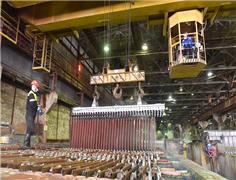
The London Metal Exchange (LME) on Saturday banned from its system Russian metal produced on or after April 13 to comply ...
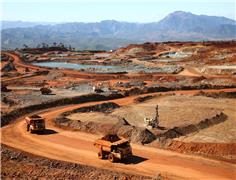
French mining group Eramet said on Wednesday it had reached an agreement with the French government to continue its ...
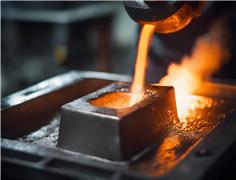
Copper jumped to its highest intraday price since January 2023 as the bellwether industrial metal faces rising tighter ...

A US and European Union push to reach an accord on fostering critical mineral supply chains is set to miss another ...
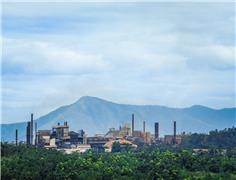
Indonesia’s mining minister on Wednesday said divestment of Vale Canada Ltd and Sumitomo Metal Mining Co. Ltd’s shares ...

Battery metal prices are on the floor, and massive expansions by Chinese miners have been instrumental in driving them ...
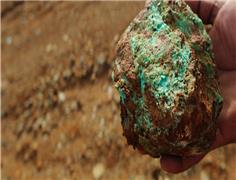
Indonesian state-controlled miner Aneka Tambang (Antam) aims to launch the construction of two nickel processing ...
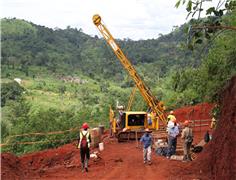
Ivanhoe Electric (NYSE American: IE) (TSX: IE) terest in the Samapleu-Grata nickel-copper project in Côte d’Ivoire after ...
No comments have been posted yet ...